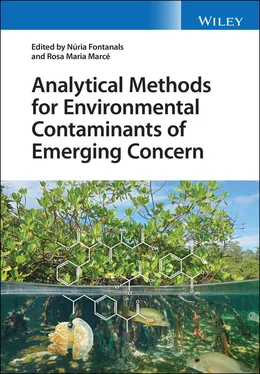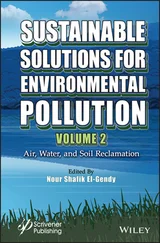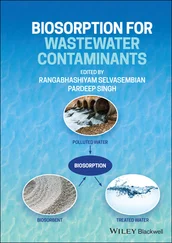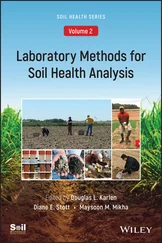1 ...6 7 8 10 11 12 ...27 bLimit of detection.
In relation to solid samples, such as soils, the most common methods were based on solid-liquid extraction (SLE), pressurized liquid extraction (PLE) and QuEChERS (see Table 1.2). In SLE methods, solvent mixtures such as acetonitrile and water have been widely used. For example, a mixture of water/acetonitrile (10 : 90, v/v ) was utilized to monitor pesticide residues in soils from Argentina [62], or a mixture of water/acetonitrile (40 : 60, v/v ) was used for the extraction of oxanilic and sulfonic acids metabolites [92]. Hu et al. employed methanol:water (50 : 50, v/v ) instead of acetonitrile for the extraction of acetochlor and propisochlor in soils from Beijing (China) [63]. Colazzo et al. tested different solvents and mixtures, such as acetonitrile, methanol, water and methanol/water, choosing methanol as the best option (recoveries ranged from 45 to 90%) to determine pesticide residues in paddy fields and sugar cane from Uruguay [93].
Table 1.2 Overview of analytical methods applied to determine pesticides in soil matrices. a
| Pesticides |
Extraction |
Determination technique |
Recovery (%) |
LOQ (µg kg−1) |
Reference |
| Famoxadone and metabolites |
SLE: Water/Acetonitrile 1% acetic acid (50 : 50, v/v) |
LC-Orbitrap-MS |
72–113 |
20 |
[28] |
| OCPs, OPPs, pyrethroids (58) |
SLE: Water/Acetonitrile 1% acetic acid. Extraction salts: MgSO 4and sodium acetate Clean-up: MgSO 4, PSA & C18 |
GC-QqQ-MS/MS |
69−119 |
100−5000 |
[61] |
| 30-multicalss |
SLE: Methanol Clean-up: SPE (Oasis HLB) |
LC-QTRAP-MS/MS |
70−120 |
1−10 |
[93] |
| 18-multiclass |
SLE: Water/Acetonitrile (1 : 5, v/v) |
LC-QqQ-MS/MS |
50−120 |
50 |
[62] |
| Fenamidone, propamocarb |
SLE: Methanol or Water Clean-up: MgSO 4& PSA |
LC-QqQ-MS/MS |
77−108 |
0.4–2 |
[100] |
| Oxanilic and sulfonic acid metabolites of acetochlor |
SLE: Acetonitrile /Water (60 : 40, v/v) |
LC-QqQ-MS/MS |
91−120 |
1−2 |
[92] |
| Endosulfan, chlorpyrifos and their metabolites |
SLE: Ethyl acetate with a 1 : 5 (w/v) soil-to-solvent ratio |
GC-IT-MS |
76−95 |
10−50 b |
[29] |
| Acetochlor and Propisochlor |
SLE: Methanol/water (1 : 1 v/v) Clean-up: PSA |
GC-ECD |
80−116 |
10 |
[63] |
| 10 OCPs |
SLE: Water/Acetonitrile Clean-up: MgSO 4 |
GC-QqQ-MS/MS |
70−115 |
2−40 |
[106] |
| 10 OCPs and metabolites |
QuEChERS. Clean-up: Sulfuric acid and florisil |
GC-IRMS |
60−100 |
500 |
[115] |
| 218 |
QuEChERS using Acetonitrile 2.5% formic acid. Extraction salts: MgSO 4& sodium acetate |
LC-QqQ-MS/MS GC-QqQ-MS/MS |
70−120 |
0.5−20 |
[99] |
| Pydiflumetofen enantiomers |
QuEChERS Clean-up: MgSO 4& C18 |
UHPLC-QqQ-MS/MS |
84–103 |
5 |
[97] |
| Pyrethroid pesticide metabolite |
QuEChERS Clean-up: d-SPE |
GC-IT-MS |
70−94 |
13 |
[64] |
| 32-multiclass |
UAE: 40 mL of methanol–water (4 : 1 v/v). 20 minutes |
LC-Q-MS |
60−110 |
1.5−5.0 |
[107] |
| 25-Triazines, phenylureas, phenoxy acid pesticides |
PLE: Dichloromethane –acetone (1 : 1, v/v) and Acetonitrile–water (2 : 1, v/v) |
LC-QqQ-MS/MS |
65−120 |
0.1−3 |
[95] |
| 51 Fungicides and insecticides |
PLE: Methanol:acetonitrile (70 : 30, v/v) Methanol: Acetonitrile:formic acid (65 : 30:5, v/v) |
LC-QqQ-MS/MS |
57−136 |
0.3−8.5 |
[96] |
| 9 OPCs & PAHs |
MAE: Hexane/water (3 : 2 v/v) |
GC-QqQ-MS/MS |
− |
− |
[104] |
| 8 Pesticides and metabolites |
DLLME |
LC-FD |
70−120 |
0.07−80 |
[114] |
| 8 Chiral pesticides |
MSPD-DLLME |
LC-QqQ-MS/MS |
87−104 |
0.2−1.5 |
[65] |
| 5 OPPs |
Deep eutectic solvent embedded sponge |
LC-UV-Vis |
− |
− |
[113] |
aAbbreviations: DLLE: Dispersive liquid-liquid microextraction; d-SPE: Dispersive solid phase extraction; ECD: Electron capture detector; FD: Fluorescence detection; GC: Gas chromatography; HLB: Hydrophilic-lipophilic balanced; IRMS: Isotope ratio mass spectrometry; IT: Ion trap; LC: Liquid chromatography; MAE: Microwave-assisted extraction; MS: Mass spectrometry; MSPD: Matrix solid phase dispersion; MS/MS: Tandem mass spectrometry; OCPs: Organochlorine pesticides; OPPs: Organophosphorus pesticides; PAHs: Polycyclic aromatic hydrocarbons; PCBs: Polychlorinated biphenyls; PLE: Pressurized liquid extraction; PSA: Primary secondary amine; Q: Single quadrupole; QqQ: Triple quadrupole; QTRAP: Hybrid triple quadrupole-linear ion trap; SLE: Solid-liquid extraction; SPE: solid phase extraction. UAE: Ultrasonic-assisted extraction; UHPLC: Ultra-high-performance liquid chromatography; UV-Vis: Ultraviolet-visible detection.
bInstrumental method (µg l −1).
The PLE method is based on the use of a solvent that is applied at high pressure and temperature through a solid or semisolid sample (e.g. soils) to effectively extract the analytes, being faster than conventional SLE. The selection of optimum experimental parameters, such as extraction temperature, flush volume and preheat time, can allow the extraction of a large number of pesticides within a wide polarity range in only one step [94]. Two different extraction solvents, dichloromethane:acetone (1 : 1, v/v ) and acetonitrile:water (2 : 1, v/v ), were used for the determination of triazines, phenylureas and phenoxy acid pesticides [95]. Fungicides and insecticides were also extracted using PLE, applying two extraction solvents, methanol:acetonitrile (70 : 30, v/v ) and methanol:acetonitrile:formic acid (65 : 30:5, v/v ), obtaining recoveries from 57% to 136% [96].
The QuEChERS approach has been widely used to extract pesticides from soils [3] and several modifications were carried out to improve sample extraction. One of them was matrix hydration, which consisted of the addition of water before solvent addition [97]. This approach was used for the extraction of pydiflumetofen enantiomers, obtaining recoveries between 84–103% or for the determination of afidopyropen and its metabolite residues in a cotton field with acceptable recoveries (85–100%) [98]. Another modification was the acidification of the solvent to improve the extraction of target analytes. For instance, acetonitrile, acidified with 2.5% formic acid, provided acceptable recoveries (70–120%) for the simultaneous monitoring of 218 pesticide residues in clay loam soil [99]. The clean-up step was not commonly used in soil samples and only a few studies employed dispersive solid phase extraction (d-SPE). The sorbents and salts commonly used were primary secondary amine (PSA) and anhydrous magnesium sulphate (MgSO 4) [98, 100]. Other sorbents, such as C18, were also used in combination with PSA [61] or with MgSO 4[97].
Finally, SPE, using OASIS HLB cartridges, was also applied to concentrate the extract before chromatographic analysis [93].
Tissue analysis is more challenging than water or soil analysis due to the complexity of those matrices. Thus, for the extraction of pesticides from biota, different extraction techniques can be applied such as SPME [40], PLE, SPE, ultrasonic-assisted extraction, dispersive liquid-liquid extraction and SBSE [101], adding a freezing-lipid filtration in fatty materials. Other procedures such as QuEChERS have been widely used in the last few years, using in the clean-up step based on d-SPE a mixture of sorbents that includes MgSO 4, PSA, C18 and graphitized carbon black (GCB) [46, 47, 49], as indicated in Table 1.3.
Читать дальше












